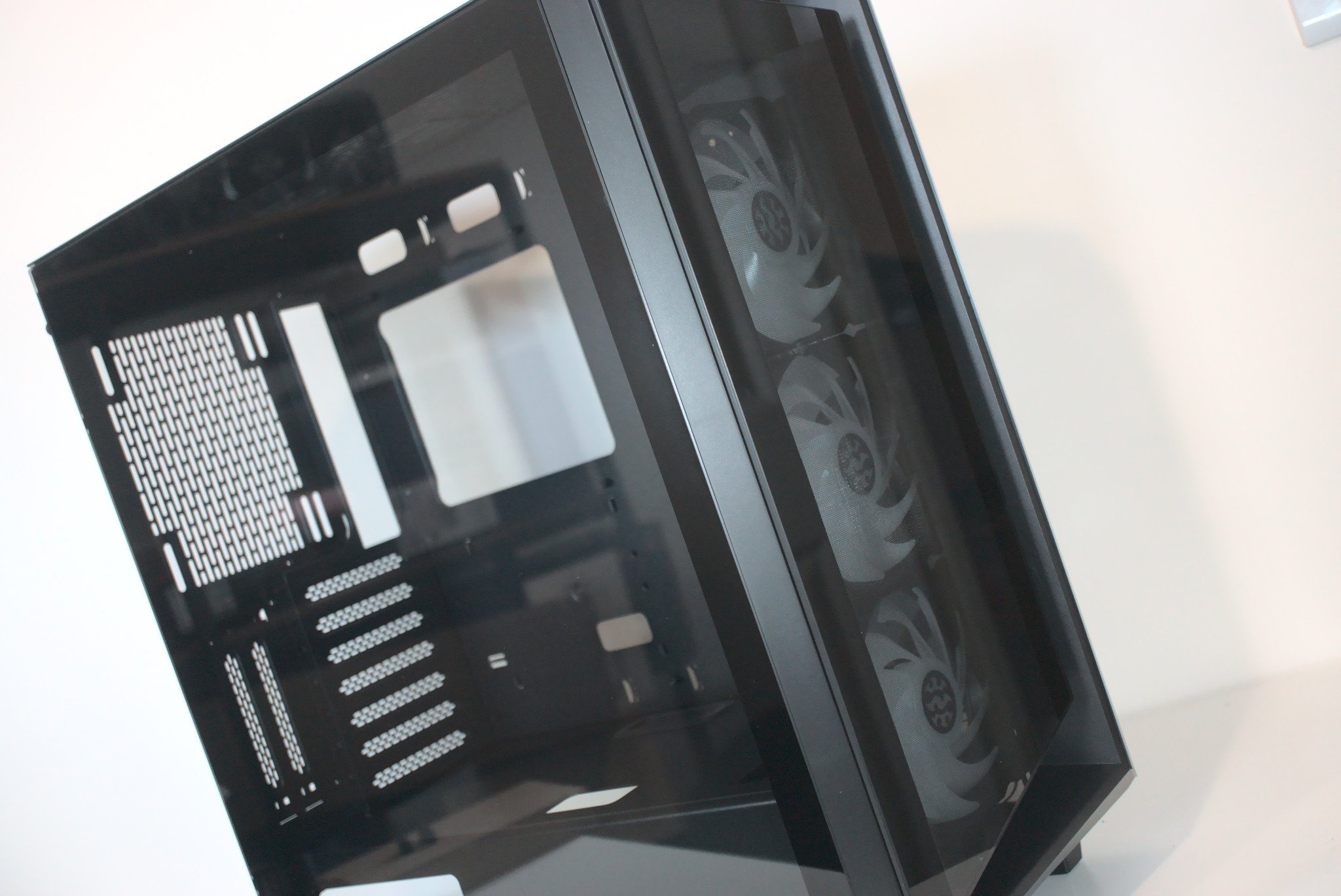ADATA is going all-out with its gaming range of PC hardware under its XPG brand, and the XPG Cruiser is yet another fine addition to this product arsenal. The XPG Cruiser is a mid-tower PC case with plenty of internal space for more powerful gaming and enthusiast builds, supporting radiators for both AIO and custom loop liquid cooling.
Despite its mid-tower chassis size, the XPG Cruiser supports motherboard sizes up to E-ATX, which is usually reserved for more advanced components. Throw in support for up to a 380mm radiator, an integrated RGB controller, and space to install seven case fans, and the XPG Cruiser should have no issue with power-hungry components.
The mid-tower segment of the PC case market is a competitive one, but we'll see in this review whether the XPG Cruiser has what it takes to grab a spot in our best PC cases collection.
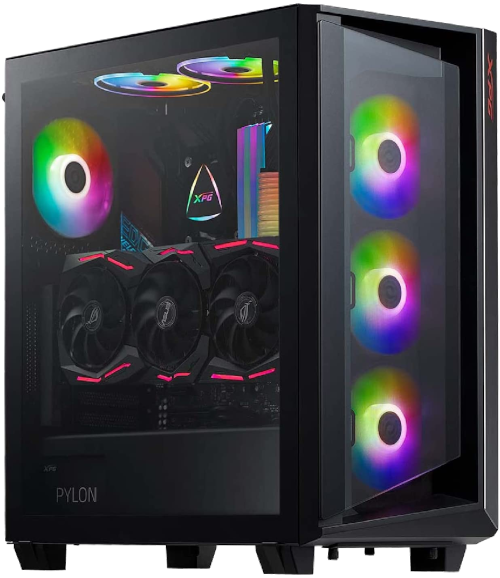
Bottom line: The XPG Cruiser not only looks great, but it's also capable of handling even more power-hungry components, thanks to the expansive liquid-cooling support.
For
- Sleek design
- Plenty of internal space
- Supports up to 380mm radiators
- Can handle E-ATX motherboards
- Good thermal performance
Against
- Cable management
XPG Cruiser: Price and availability
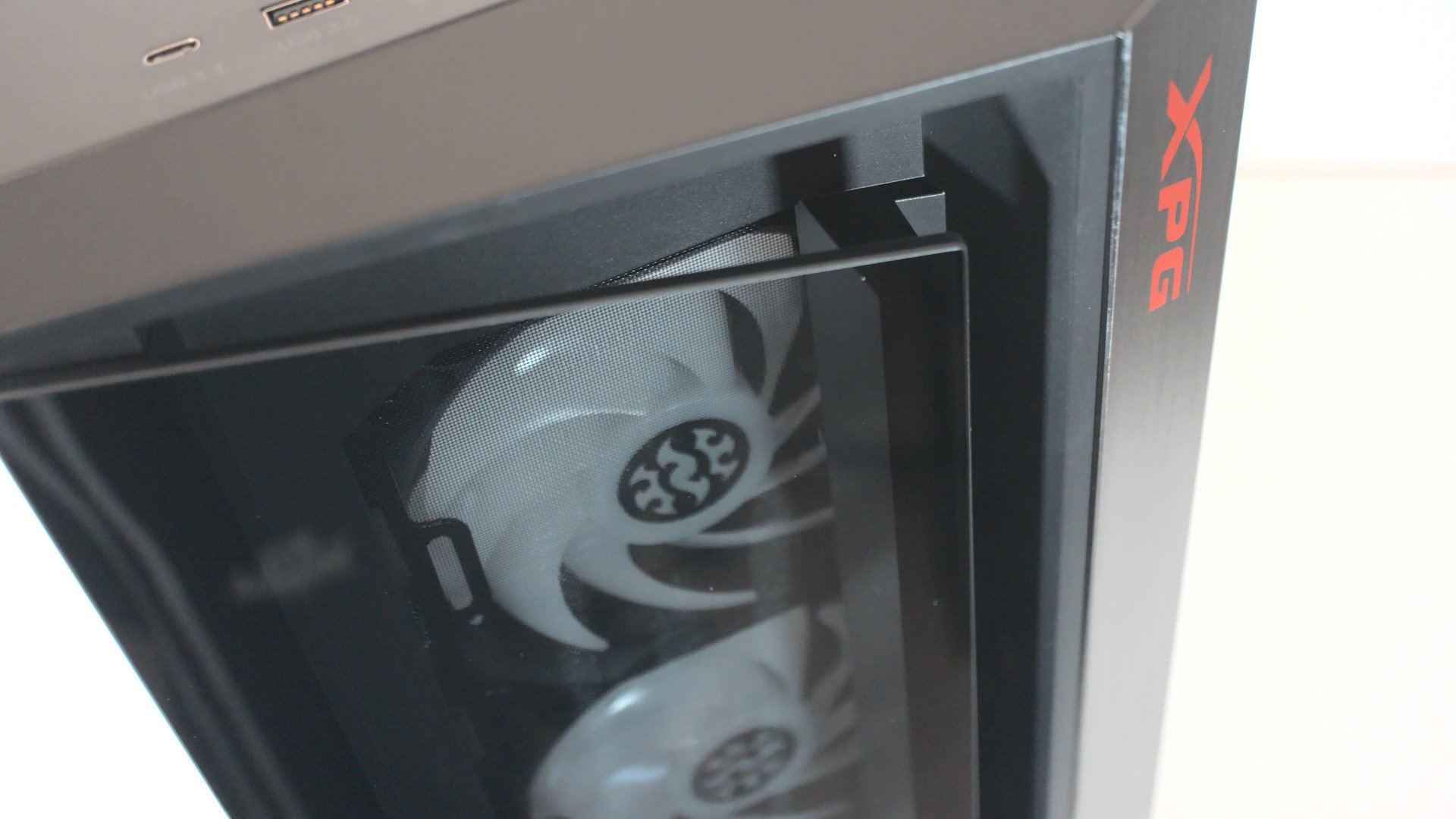
The XPG Cruiser isn't the most expensive case on the block, but it still commands a price tag of $110. This is a decent chunk of change for a mid-tower PC case and puts the Cruiser on the same stage as NZXT, Corsair, and be quiet! cases. Considering this chassis rocks not one, but two tempered glass panels, the price is an aggressive move from ADATA.
| Category | XPG Cruiser |
|---|---|
| Motherboard | E-ATX, ATX, microATX, ITX |
| I/O | 2x USB-A 3.01x USB-C 3.1 Gen 21x audio jack |
| Expansion | 7x horizontal, 2x vertical |
| Storage | 2x 2.5-inch SSD/2x 3.5-inch HDD |
| PSU | ATX |
| Included fans | 3 |
| Front fans | 3x 120mm, 3x 140mm |
| Top fans | 2x 120mm, 2x 140mm |
| Rear fan | 1x 120mm, 1x 140mm |
| Front rad | Up to 360mm |
| Top rad | Up to 280mm |
| Filters | Front, top |
| Clearance | GPU: 350mmCPU: 170mm |
| Dimensions | 19.4 x 9.2 x 18.3 inches(493mm x 234mm x 466mm) |
| Weight | 10.7 pounds (8.5kg) |
| Materials | Steel, tempered glass |
| Warranty | 2 years |
| Color | Black, White |
XPG Cruiser: What's good

The XPG Cruiser is packaged well, and our review sample suffered no damage during transit. ADATA provides you with everything you need to create a PC inside the XPG Cruiser, including cable ties and screws. The two tempered glass panels each have a single strip of protective film to be removed. At first glance, the XPG Cruiser is an interestingly designed case.
At first glance, the XPG Cruiser is an interestingly designed case.
Upfront, there's an angled piece of glass with a large cutout to the side to allow the front three preinstalled XPG fans to pull in cool air. The right side of this panel has the XPG branding and a brushed aluminum effect. Up top is where you'll locate the power button, two USB-A 3.0 and single USB-C 3.1 Gen 2 ports, as well as a dual audio jack for headsets.
Behind this array of front I/O are two fan mounts and a magnetic dust filter. The left side panel is a large pane of tempered glass. The opposite side panel is bare metal and the rear is the usual affair of seven PCI slots (as well as two horizontal), ATX PSU mount, motherboard cutout, and a single 120/140mm fan mount.
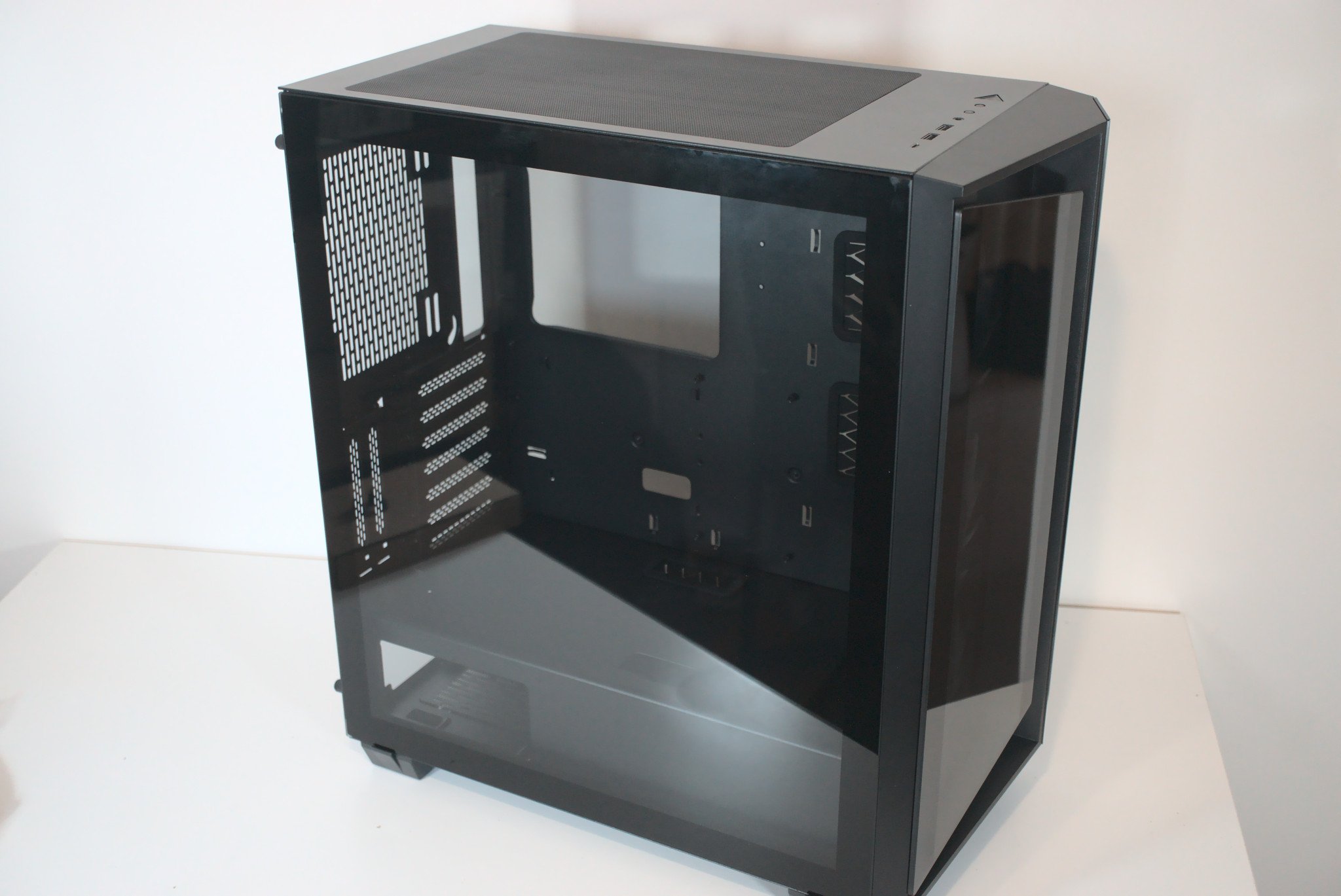
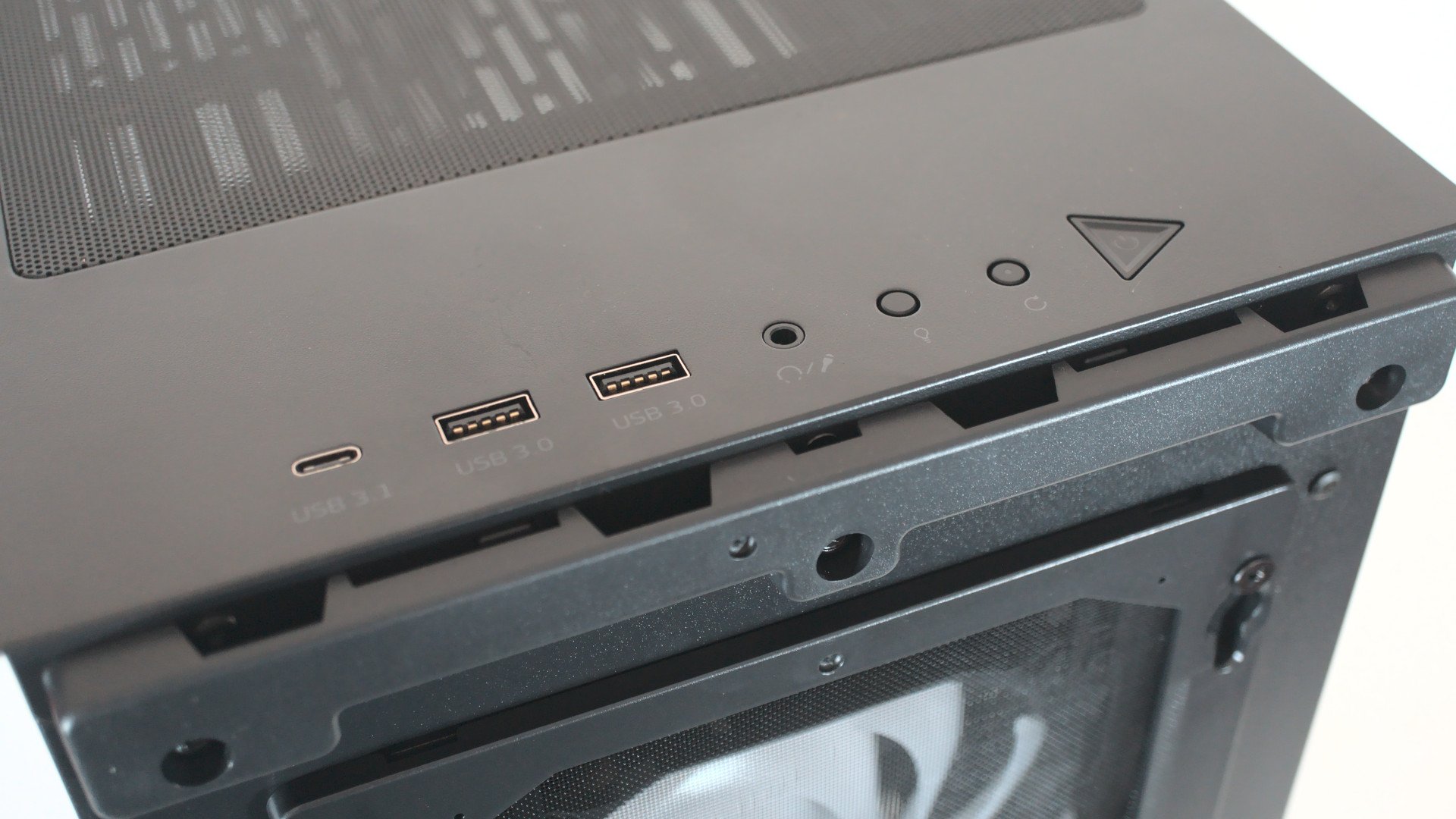
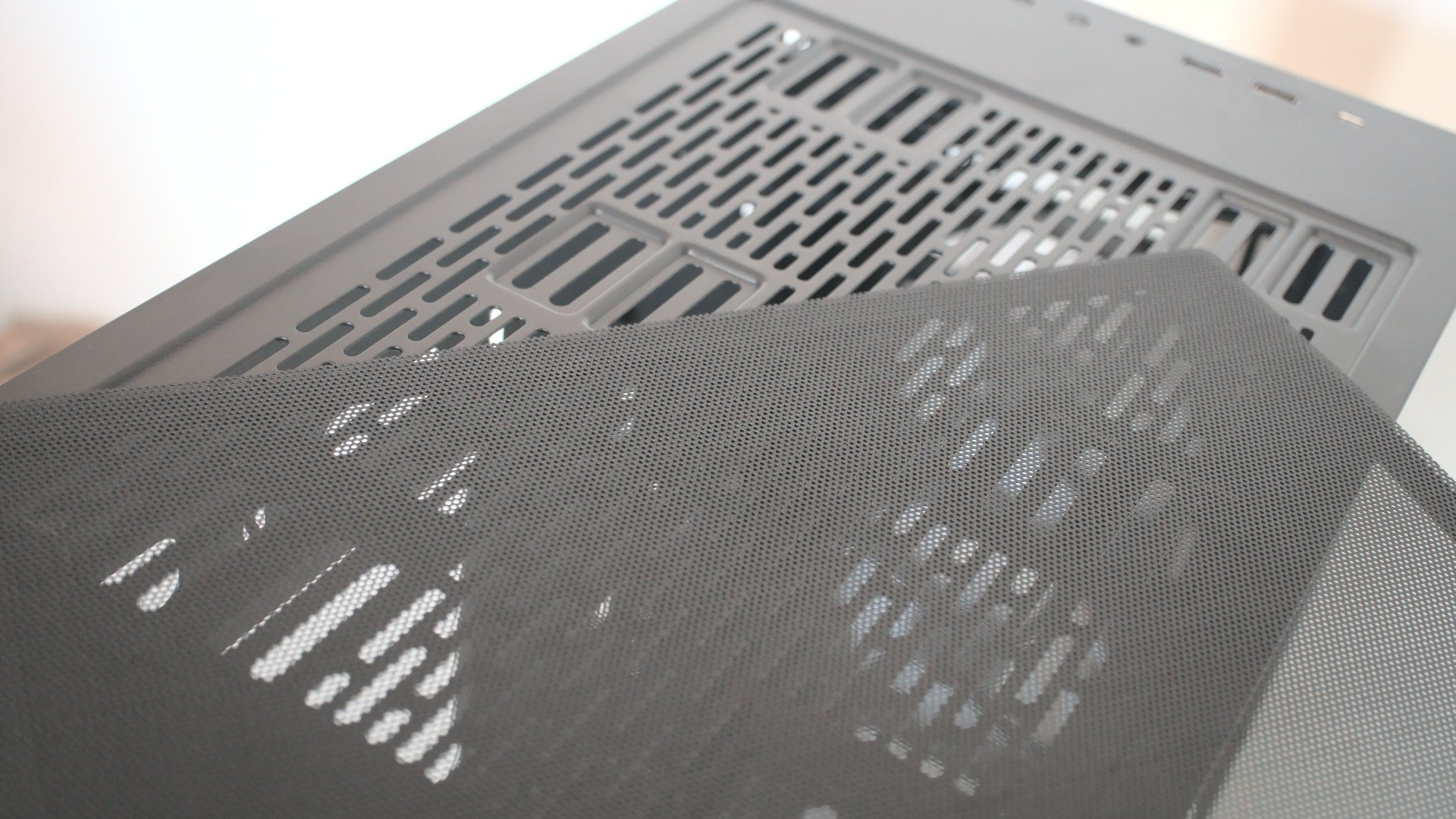
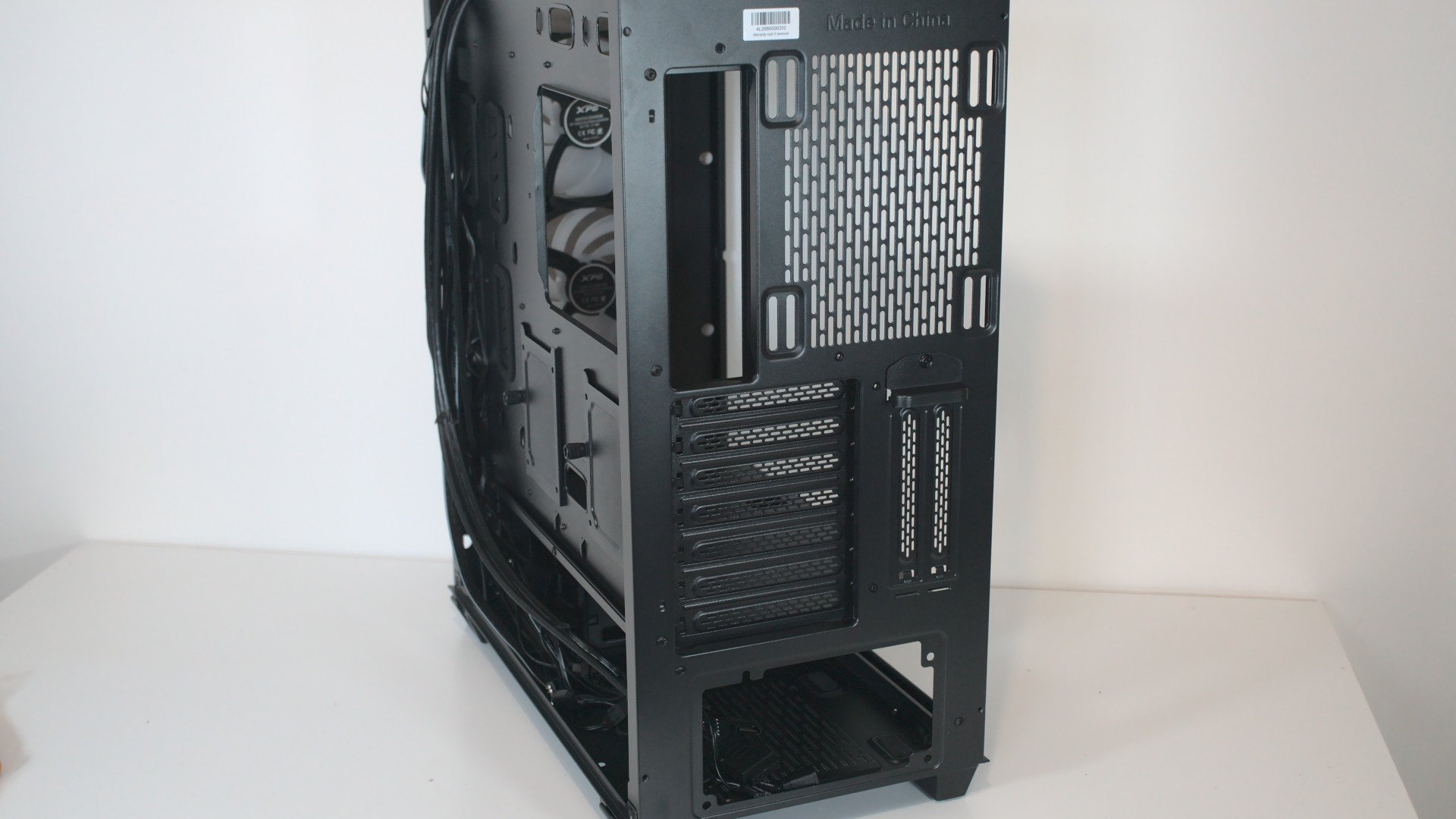

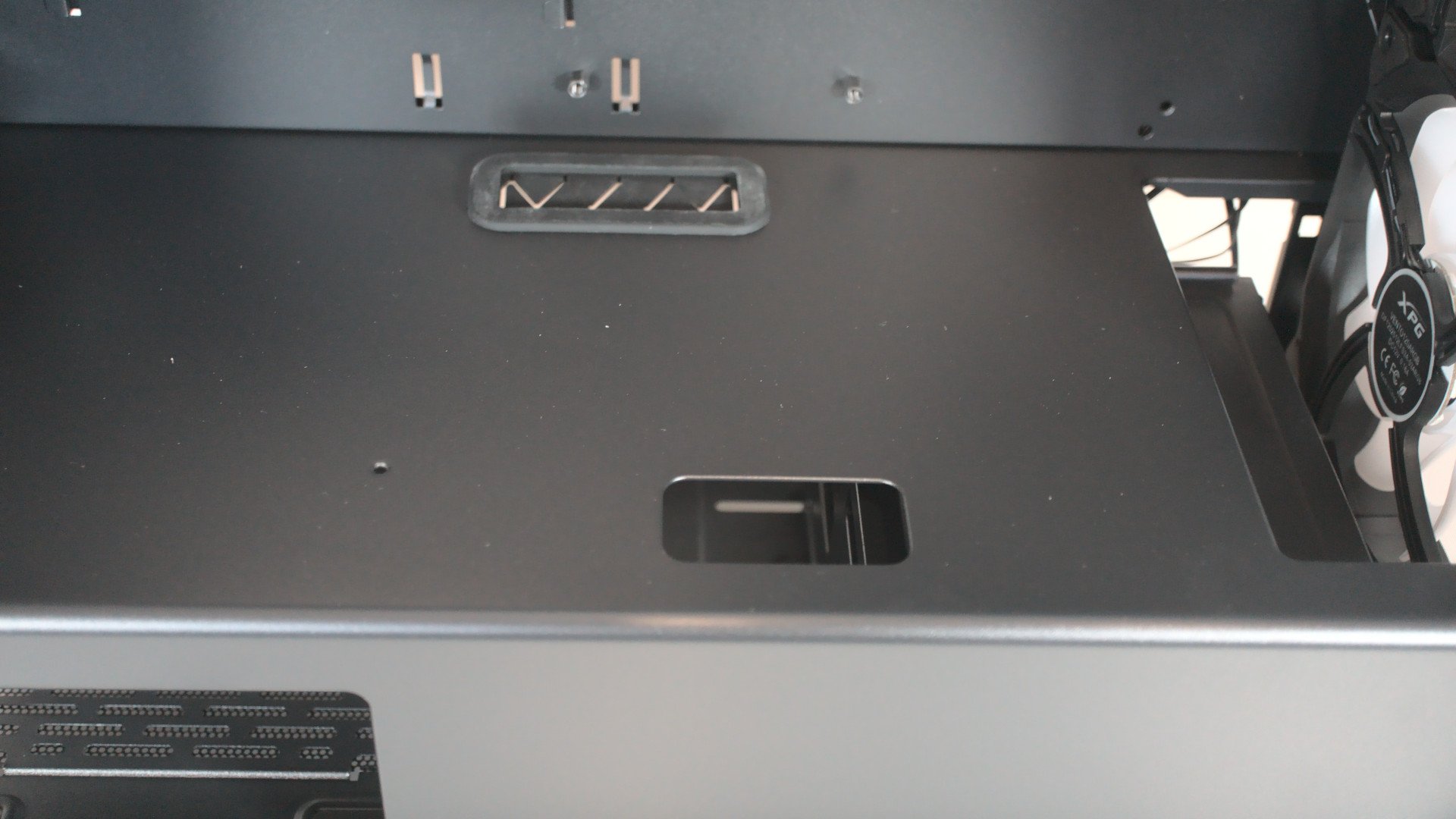
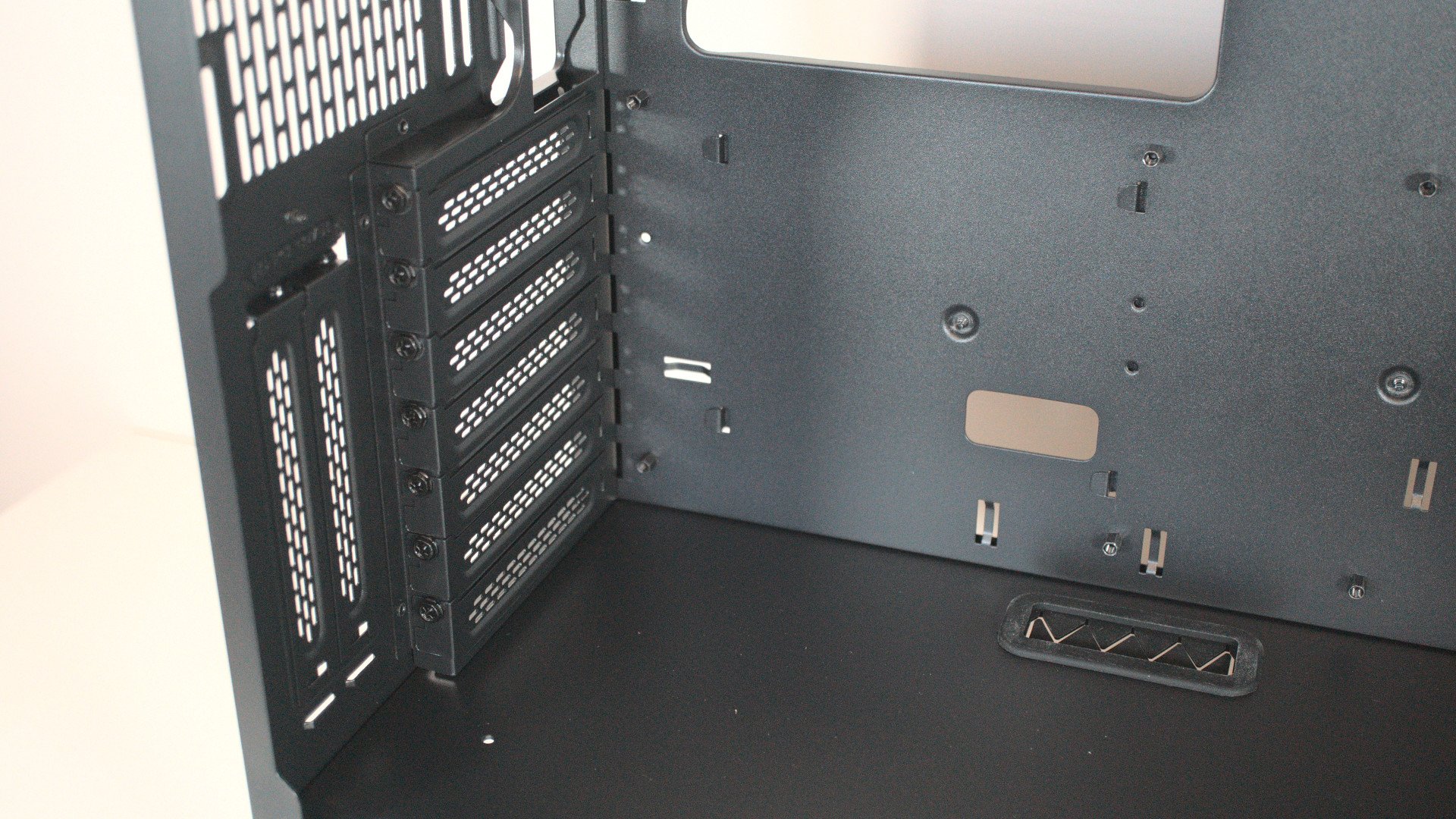
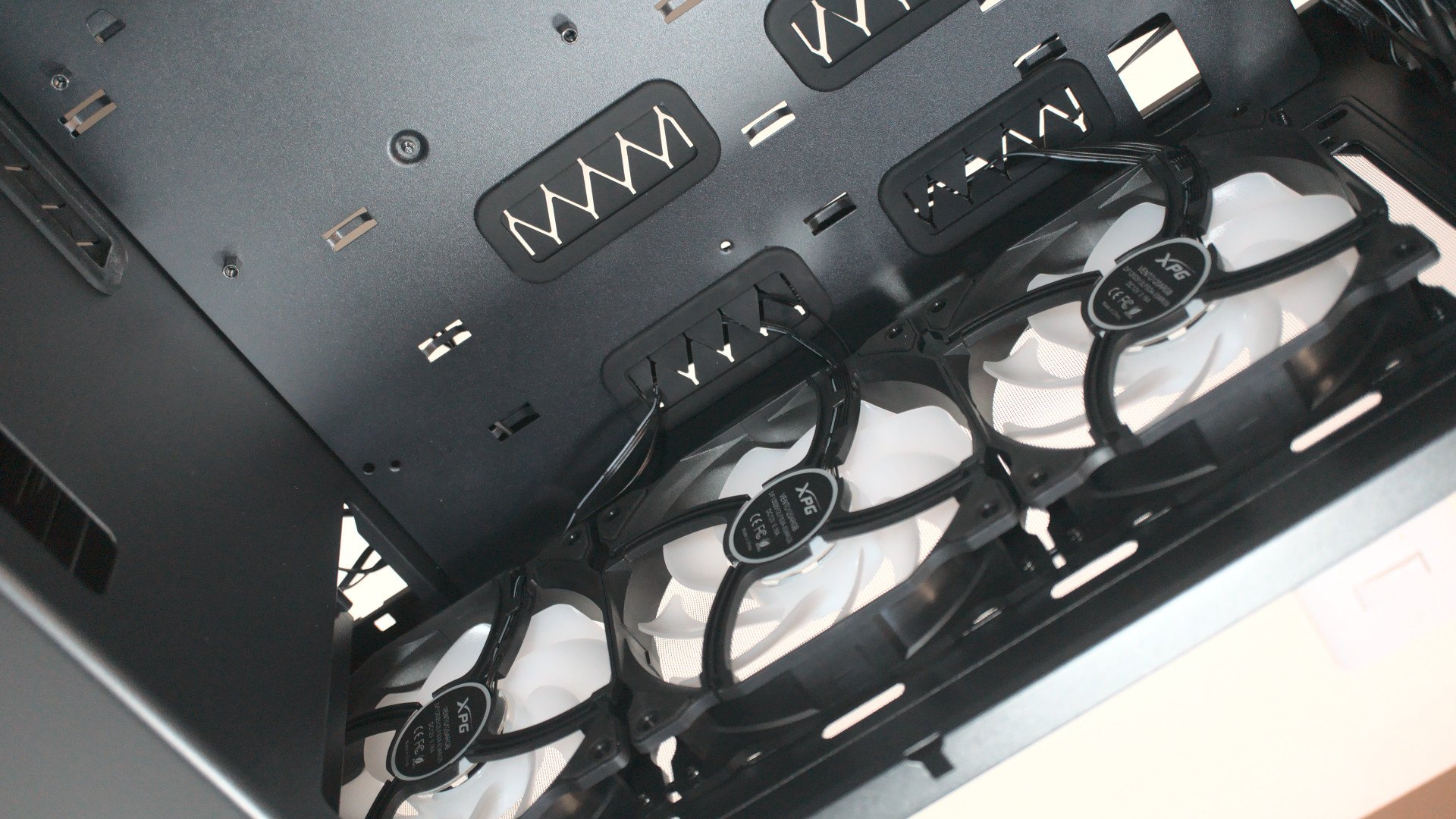
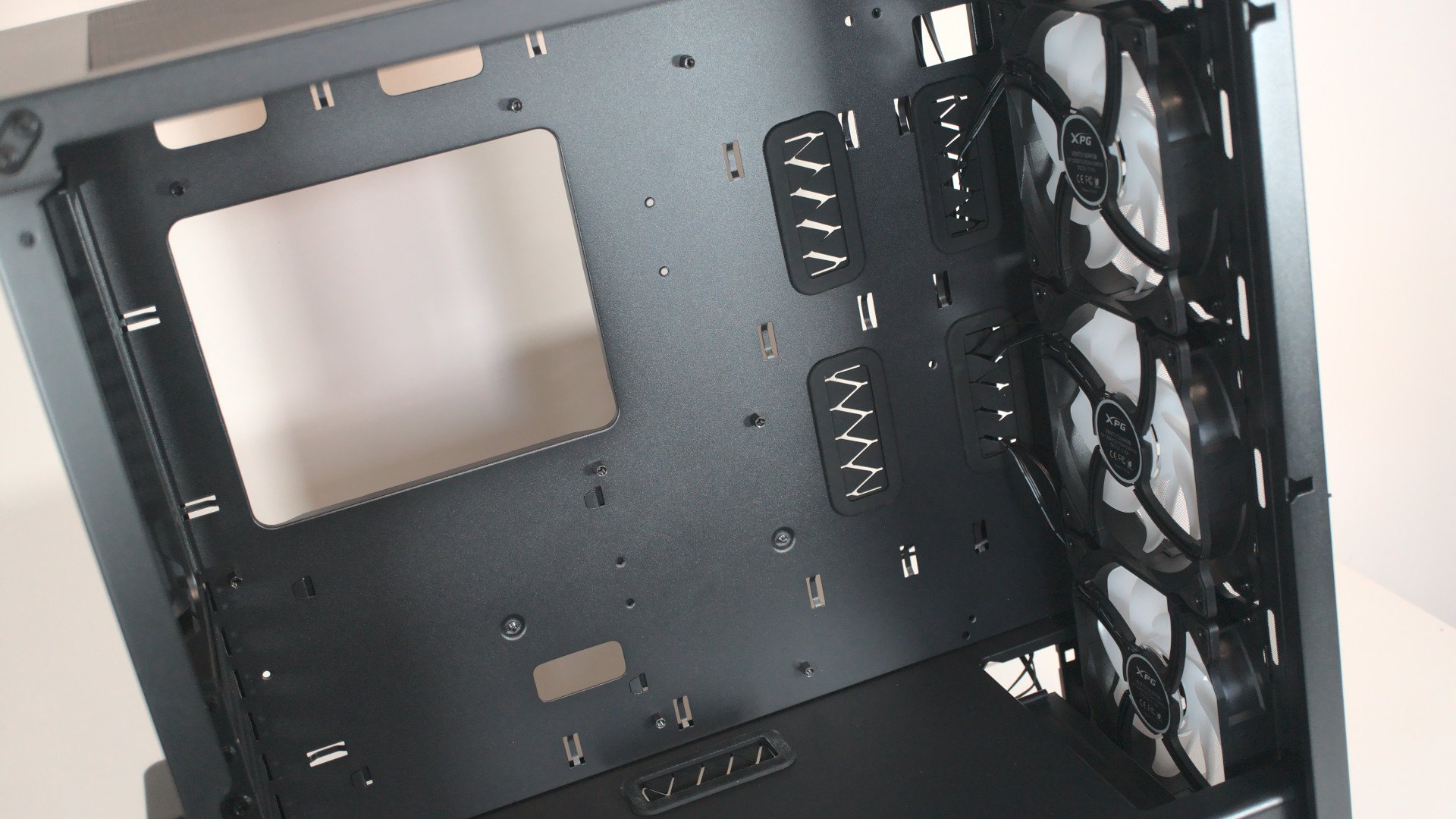
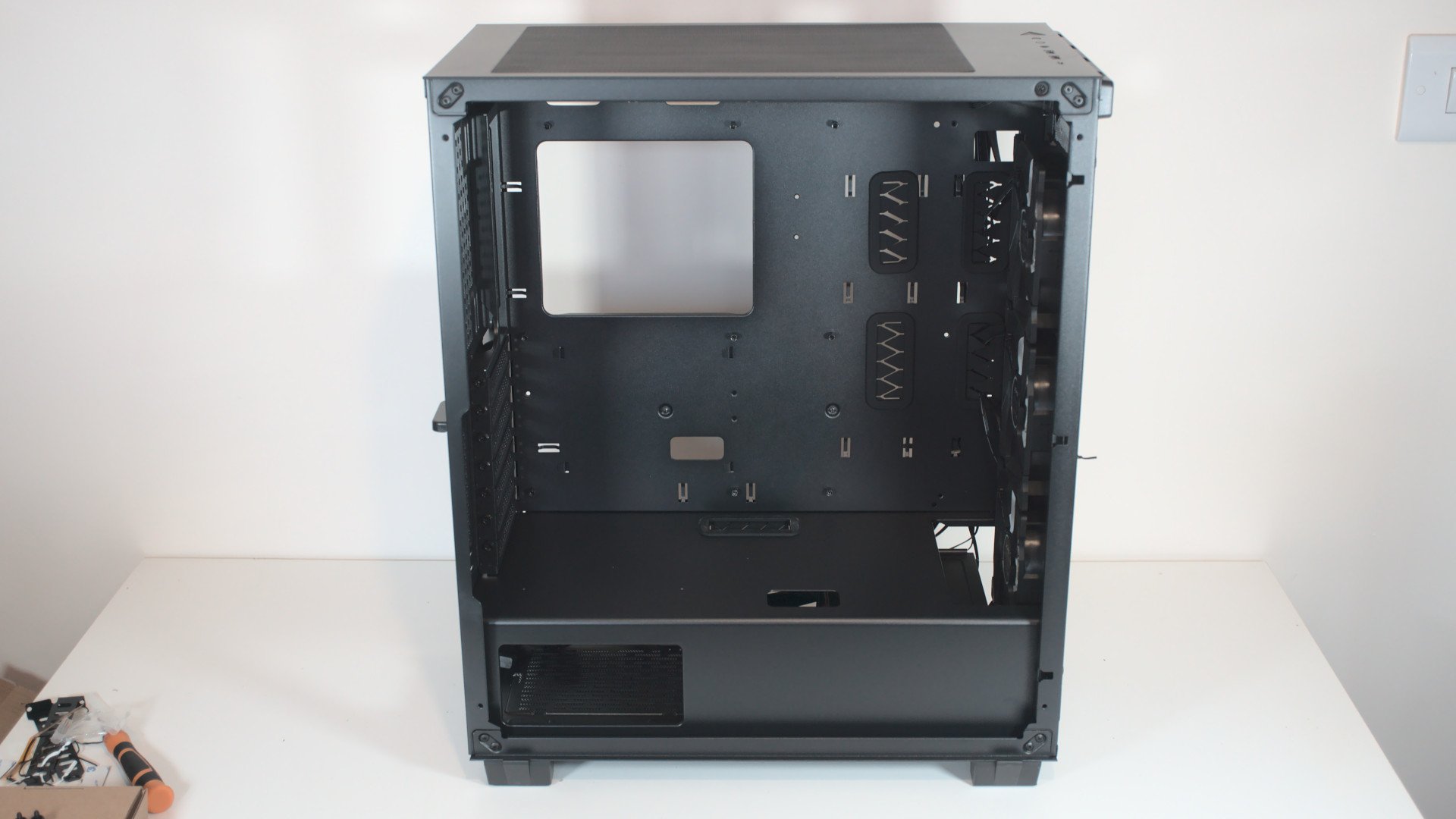
Installing a PC inside the XPG Cruiser is a straightforward process, the same as every other mid-tower case on the market. An ATX PSU goes underneath the shroud that's commonplace with most chassis of today. Up to an E-ATX motherboard can be installed up front, as well as a large GPU.
There's ample space to install a radiator and fans for an AIO liquid-cooling solution for the CPU, and you could build your own custom loop, so long as you use a fan mount for the pump and reservoir combo unit. While there are only six fan mounts, the XPG Cruiser is still capable of pushing through serious amounts of air, thanks to the unobstructed access on the front panel.
Interestingly, the XPG Cruiser only has a few grommet cutouts for routing cables from behind the motherboard tray to components on the front side. This does result in quite the basic look on the inside with no cable brackets or other design elements to break up a single sheet of metal. But this does mean you can route cables better to the GPU, power, and other ports on the motherboard.
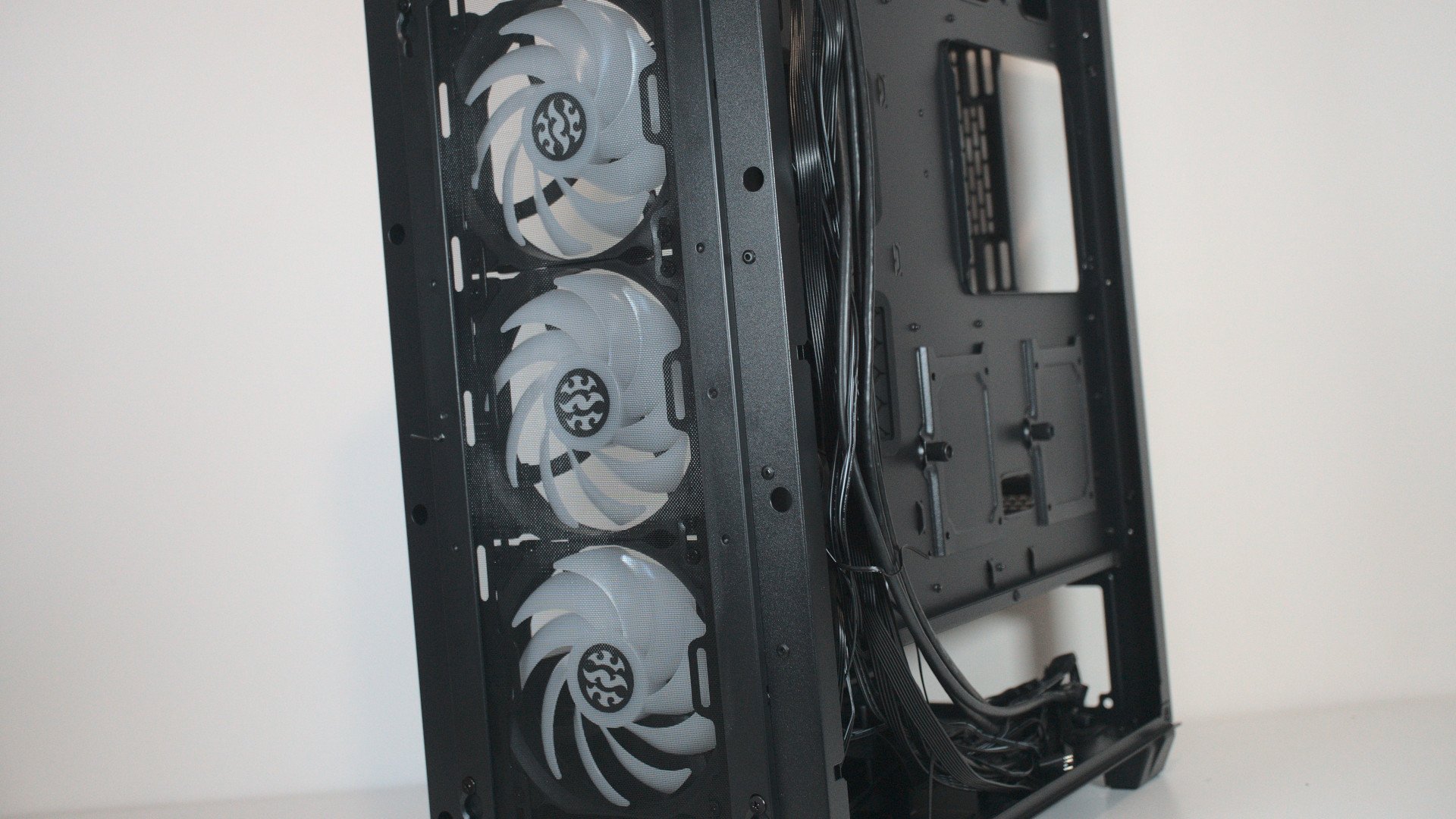
Thermal performance is good. I threw an Intel Core i5-12600K processor and NVIDIA GeForce RTX 3060 GPU inside the XPG Cruiser with 32GB of DDR5 RAM to see how it would perform with mid-tier components. Playing games wouldn't see the temperature for the 10-core CPU surpass 36 C with a 360mm AIO cooler.
XPG Cruiser: What's not good
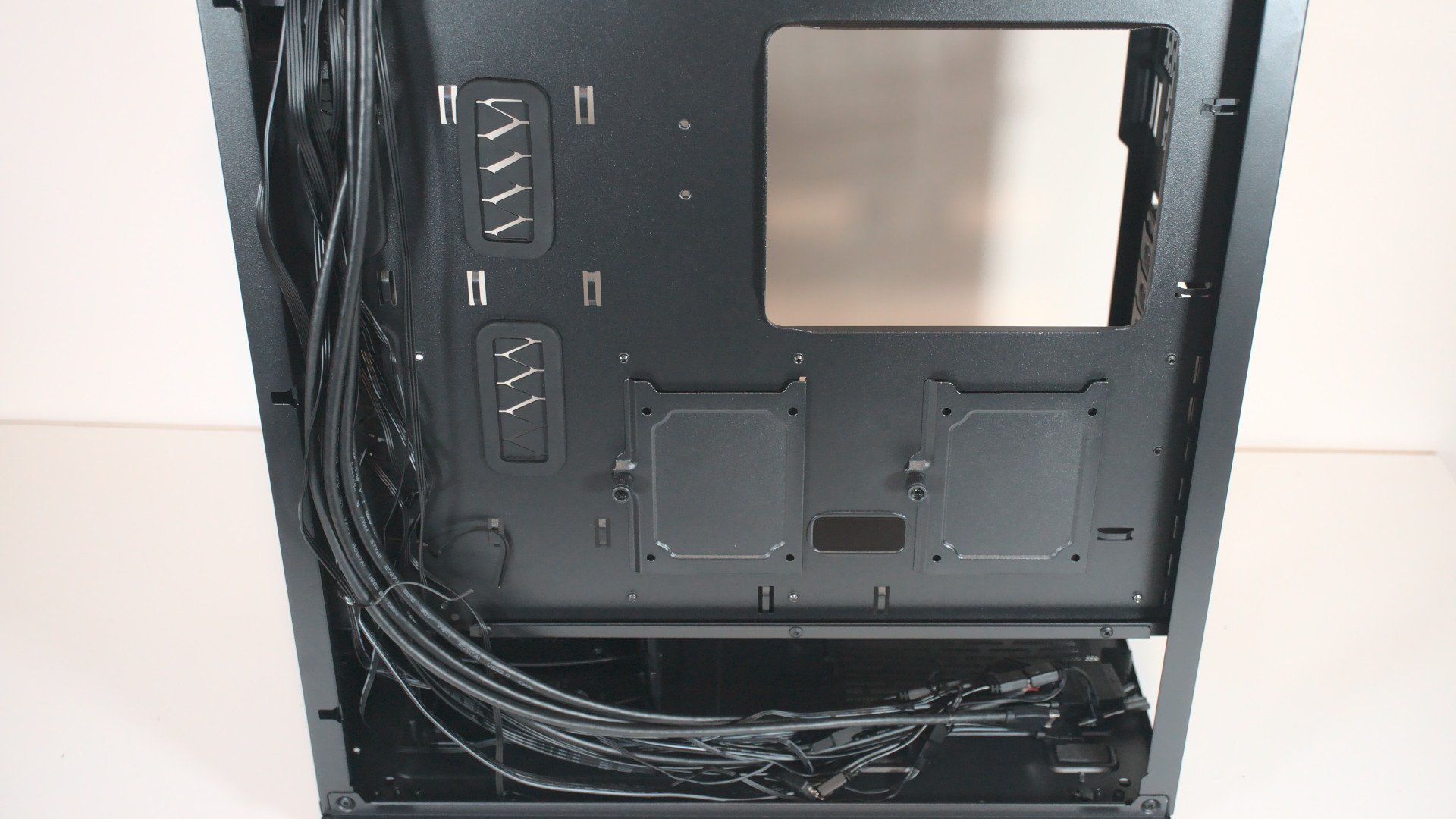
Cable management inside the XPG Cruiser is not a strong point of this case. You're going to have to battle the lack of any cable routing on the rear side of the motherboard tray. Clearance is around 40mm, which is enough for most builds, but should you want to add your own fan and RGB controller, it will start to turn messy.
Still, this could be considered a minor complaint for those who don't really care about a messy cable situation where one cannot see with all side panels installed. It's possible to create a clean-looking PC build through tempered glass, and that's all that truly matters for most PC owners.
XPG Cruiser: Competition

There's plenty of competition for the XPG Cruiser. NZXT is a big name in the PC case business and has a few gorgeous chassis available, namely the NZXT H510. This case comes in a variety of flavors, including some special CRFT versions that are themed around popular video games.
NZXT does a stellar job with cable management on all of its PC cases, allowing you to tidy everything up once all your components have been installed. The company is also working on adding mesh to its collection of chassis, further enhancing airflow and thermal performance.
be quiet! is another big name for PC cases and its Silent Base 802 is fantastic. While a little larger than the NZXT H510 and XPG Cruiser, the 802 packs a punch where it matters most. You can install pretty much anything inside this case and have more than adequate airflow for cooling.
Finally, there's the exceptionally good Lian Li O11D. I reviewed the smaller Lian Li O11D Mini, which gives all the aforementioned cases a run for their money. If you want the best PC case money can buy right now, I'd recommend the O11D range.
XPG Cruiser: Should you buy it?
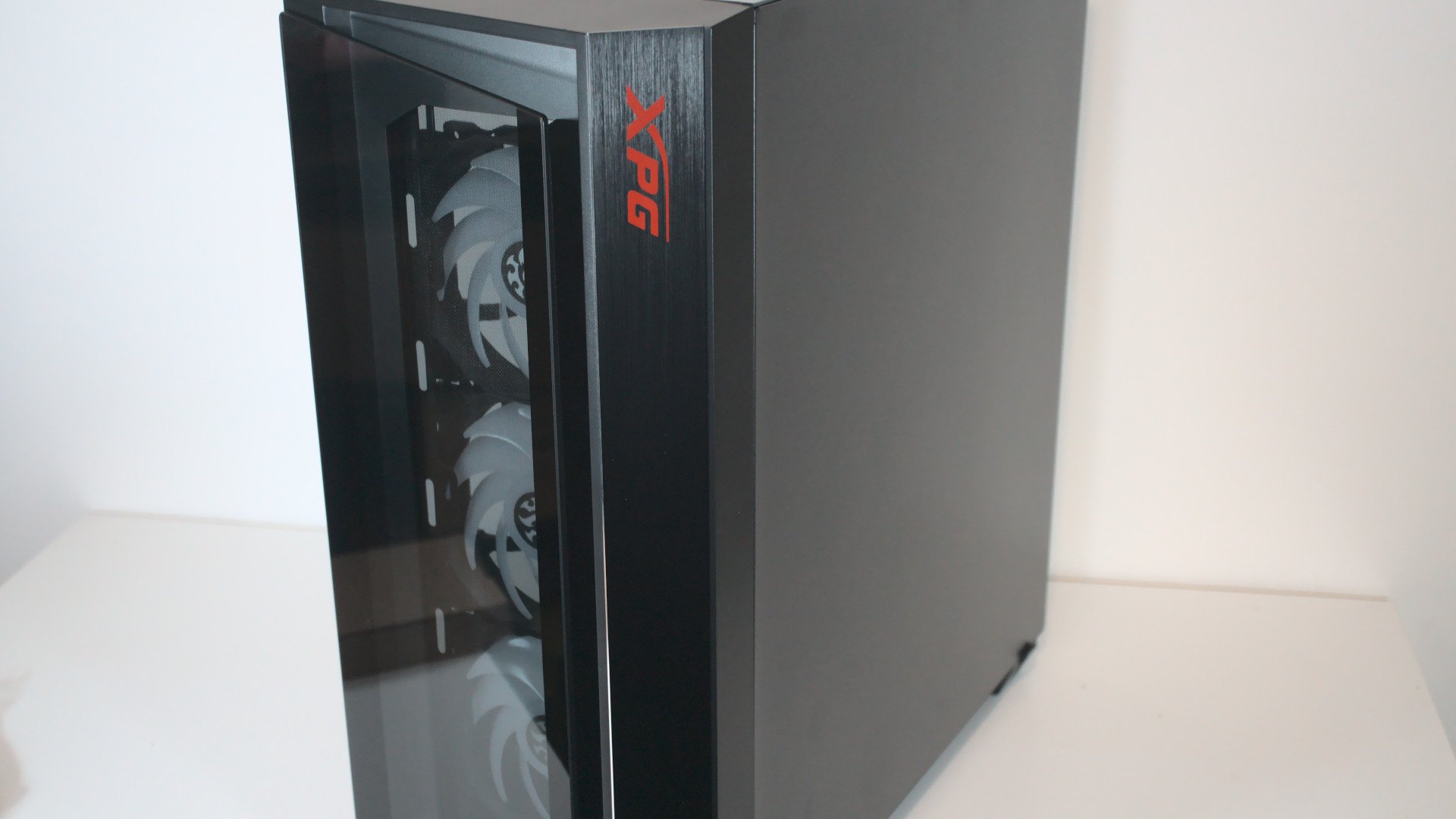
You should buy this if ...
- You want a sleek-looking, affordable PC case
- You don't feel comfortable spending more than $110
- You have a full-sized motherboard and large GPU
- You want a PC case with good thermal performance
You shouldn't buy this if ...
- You want a PC case with excellent cable management
- You want a compact small-form-factor PC case
- You want to install a radiator larger than 280mm up top
The XPG Cruiser from ADATA is a very compelling case if you want a compact, sleek-looking PC. There's enough internal space to hold an E-ATX motherboard, the largest GPU you can throw at it, and a few storage drives. The price is both attractive and aggressive, allowing one to pick up a case with good thermal performance for a little over $100.
It's not all good news with the XPG Cruiser, however. This chassis doesn't have the best cable management. In fact, it's not good for 2022 standards, especially when compared to some of its competition. Still, so long as you can overlook an awkward mess of cables behind the motherboard tray, you can create one awesome-looking PC with this case.

Rich Edmonds was formerly a Senior Editor of PC hardware at Windows Central, covering everything related to PC components and NAS. He's been involved in technology for more than a decade and knows a thing or two about the magic inside a PC chassis. You can follow him on Twitter at @RichEdmonds.
